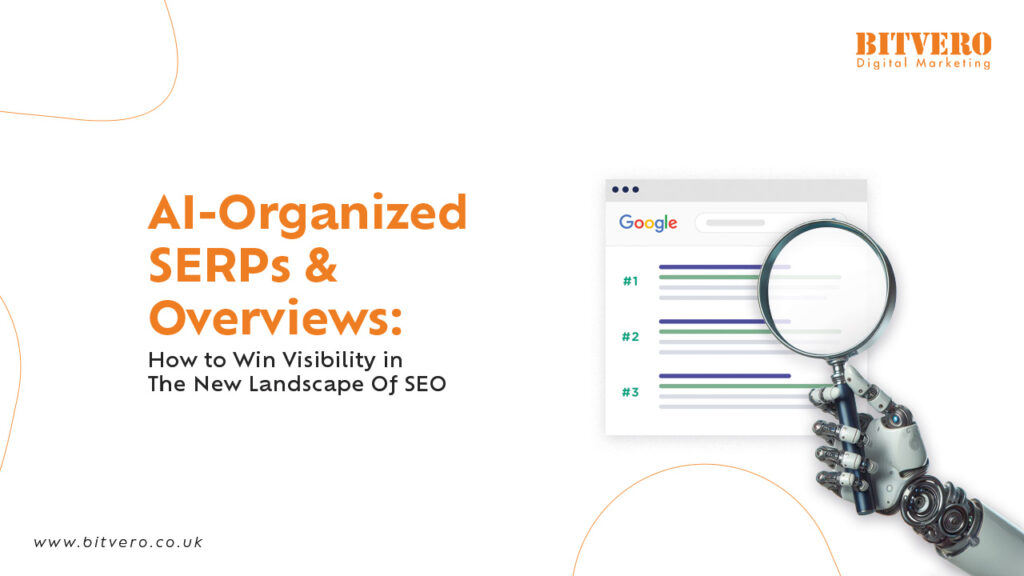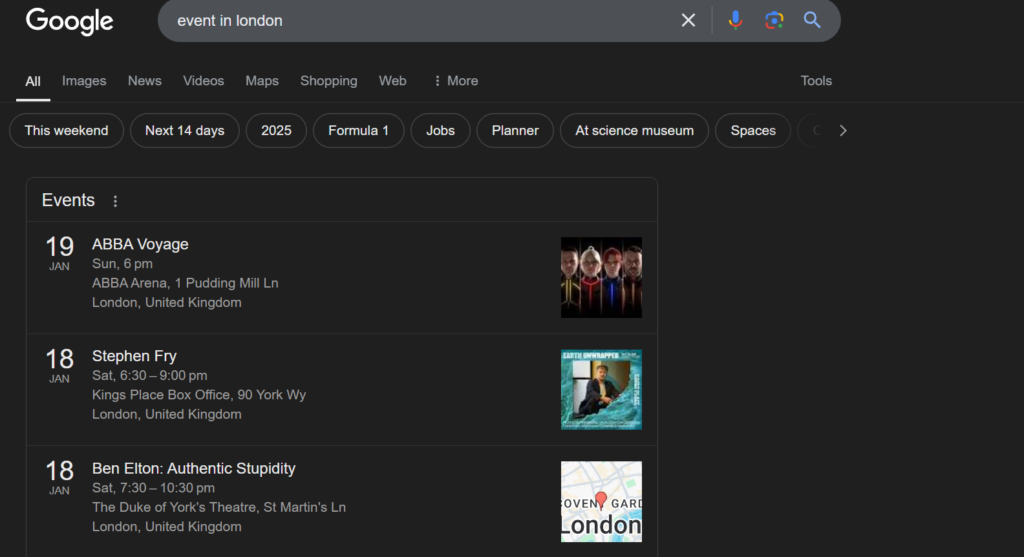AI-Organized SERPs & Overviews: How to Win Visibility in The New Landscape Of SEO

AI is taking over the world and search engines. From Bing to Google, they now rely on AI algorithms. This is in different aspects, from ranking websites and identifying spam to even producing information snapshots directly through AI.
When the place where you rank your websites now has so many AI factors, your SEO strategies must adapt accordingly to survive.
In this article, we will see some adapting SEO tactics for survival in such a habitat full of AI algorithms.
These SEO tips will focus on both scenarios: AI impacting search rankings in SEPRS or SGE generating quick overviews.
But first, let’s take a quick glance at what AI-organised SERPs and overviews are.
Let’s start.
Read also: The Impact of Generative AI on SEO Strategies
AI organised SERPs
You know that SERPS on Google or any other search engine are those blue link results that appear in response to any query.
They are basically the already indexed pages Google is fetching up in response to your query and organising them in an order based on relevance and other ranking factors.
To organise such SERPS, when any search engines start using AI, they become AI-organised SERPs.
And this is where the challenge starts for you. Here, you focus on website optimisation strategies that help you cope with AI algorithms.
Here are some SEO techniques to outlast such Google ranking challenges.
Featured Snippets
The feature of AI-organised SERPs is that they mostly present information concisely, precisely and in a structured manner. This is if a website appears at the top of the search result page r, to be more precise, at position 0. So, optimise for such feature snippets the strategies are
- Answering the searched question concisely and precisely, like in 40 to 60 words.
- Pay attention to the formatting of your content based on different kinds of featured snippets, which are
- table snippets,
- bullet snippets,
- videos or
- paragraph snippets.
- The basic and obvious thing to structure the content for such featured snippets is to target the high intent and long tail keywords, which naturally answer frequently asked questions in a smooth flow.
Opsiting for featured snippets can also make you appear in People Also Ask, another section (basically an interactive box) of the Google Search results page where web owners try to appear and get most of the clicks.
Muti model content is basically a mixture of different communication methods that are not confined to text content but images, videos, audio, interactive elements, etc. So, you must try adding as many of them as possible, all with alt text, for better search engine optimisation.
Read also: OpenAI Launches SearchGPT as ChatGPT’s Real-Time Search Feature
Add Shema Mark-Up
Schema Markup is another featured snippet-like feature of Google SERPS. It is a step ahead of the featured snippet called rich snippet.
It’s basically a code that structures your content in a highly effective and efficient way, giving the user the most important information in an easy way.
Through Schema Markup, you can make search engines understand what actually your content is about. It is a code that communicates with the search engine to convert important information on your website into rich snippets and shows that on the very top of the search engine results on the page by occupying a larger space.
Adding a Schema Markup can bring you more clicks on your website as it highlights the most important information in a well-defined manner that usually attracts the reader. Suppose you search for events near me. The result for this search query will be shown below.
In the above example, you can see the search engine provided you results in the form of a rich snippet along with other important information such as date and address.
Other common types of schema markup besides events include reviews, products, people, and local businesses.
To add Schema Markup, you can install a plugin on your WordPress site or insert the code manually into your HTML document.
To add manually, you will have to generate a schema markup code and then put the same in the <head> section of your HTML document. You can create this code using Structured Data Markup Helper.
Build Semantic Content
Before ranking any page, the AI algorithms now analyse and understand the semantic meaning of any given question thanks to Google’s natural language processing ability. So Google now understands that your content is relevant to the query even if the user used the synonym of your targeted keyword instead of the exact keyword itself.
Apart from this, Google has a number of ranking factors in place, relying on AI to place fetched web pages in order. For Instance, one example is Google RankBrain, a machine learning model which analyses and decides on ranking order in SERPS that is obviously after considering factors like relevance, proximity, intent and much more.
Use Semantic Keywords: Include synonyms and related terms naturally to align with NLP capabilities.
Focus on User Intent: Ensure your content matches query intent (informational, navigational, or transactional).
Optimize Contextual Relevance: Create in-depth content that covers related subtopics for broader understanding.
Leverage Behavioral Signals: Improve click-through rates dwell time, and reduce bounce rates to align with RankBrain’s ranking factors
AI overviews
Ai overviews are products of Google SGE or search generative experience. These are short snapshot answers directly coming via generative AI.
So now, along with those organic search results or even paid ads, this overview also appears when you search for anything on Google. In fact, they become visible even above the former.
Due to this, and also because they appear with reference links to confirm the generated information, it is no wonder that content marketers want their web links to appear with such snapshots.
Although there is no clear-cut strategy to optimise for Google SGE at the moment, SEO experts agree on tactics that may work.
- The foremost thing that even Google emphasises is the content must possess EEAT qualities. So, pay attention to it.
- Try to avoid complex and confusing language. Concise and clear answers may work better.
- You can also try Schema Markup for better structure.
- Try updating your content as frequently as possible.
- Content with mulimenris iie text, images, vidoes have more chances to apper in SGE
- Because SGE snapshots are clear and concise answers to any query, targeting long-tail words can be a good strategy. You can try a conversational tone with FAQs incorporated.
End note:
So, when it is clear that AI is getting stronger in the SEO field, SEO strategies have to be adapted accordingly. No matter if you want to rank in organic SERPs or AI overviews. So, the only tip to win in this scenario is to keep updated on AI and SEO trends so that you can prepare your strategies accordingly.
For the latest information on AI and SEO trends, you can subscribe to our blog. Here, we share information articles.
Also, if you are looking for an SEO agency in London, you can get in touch with us. Thank you!

